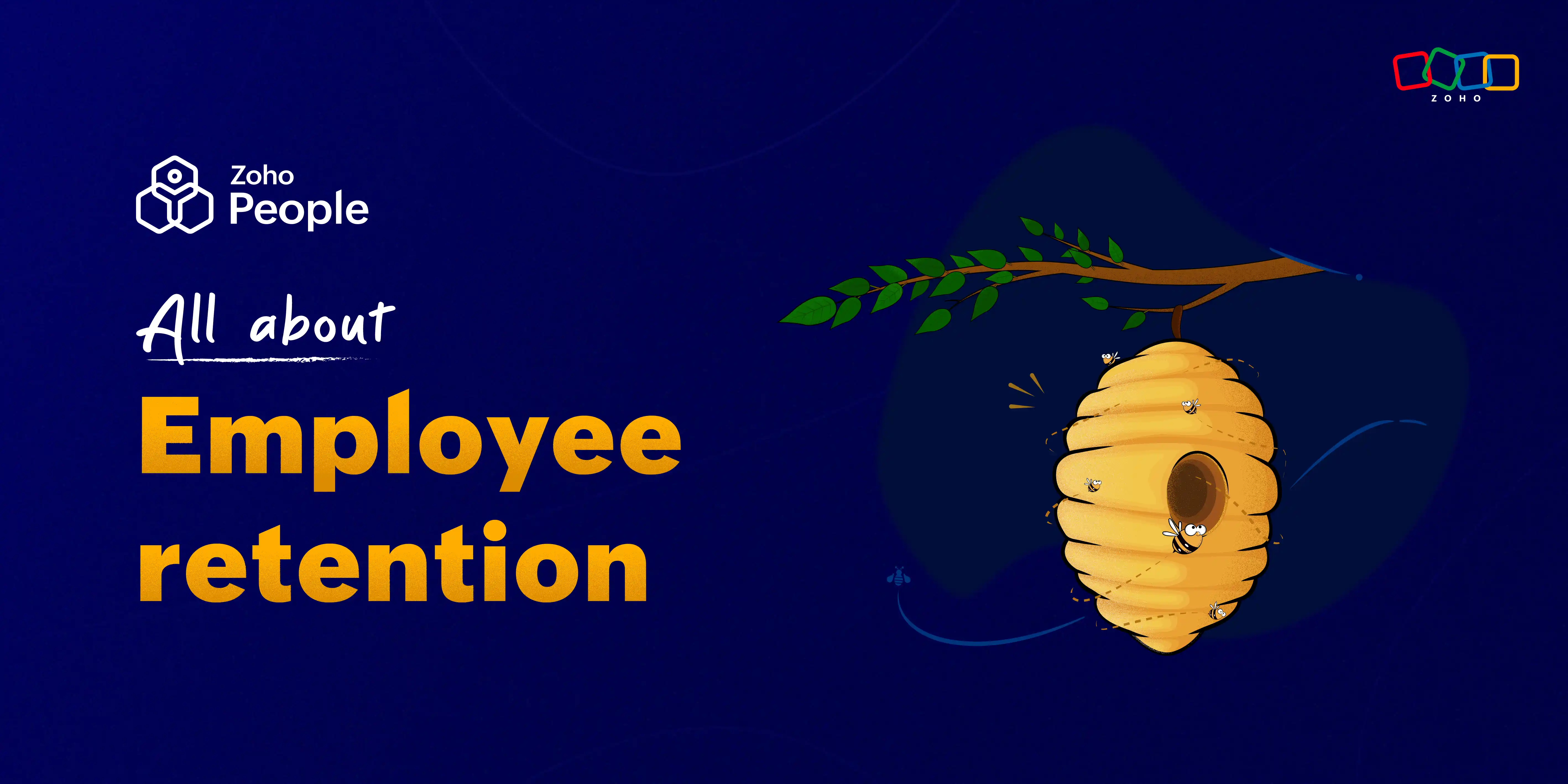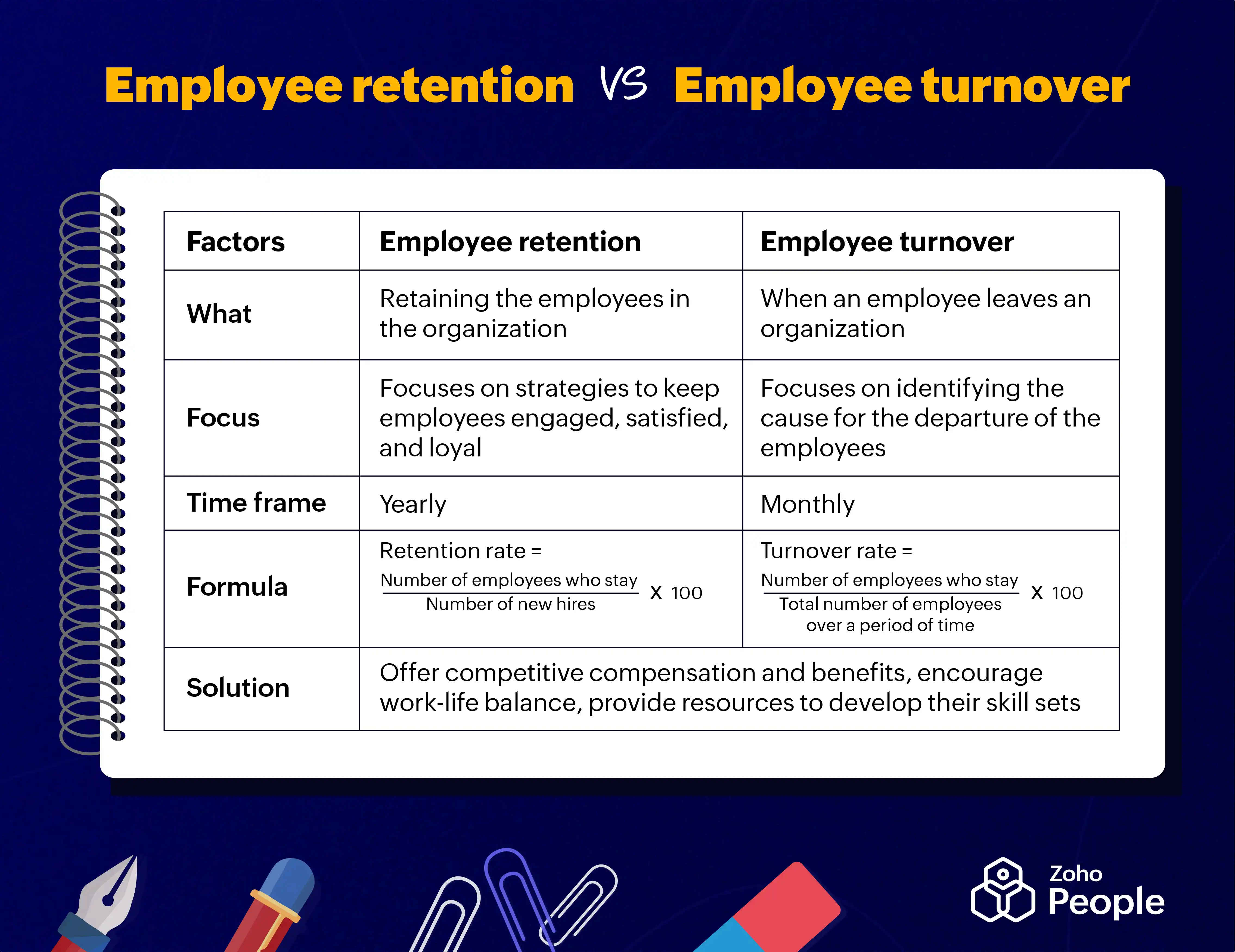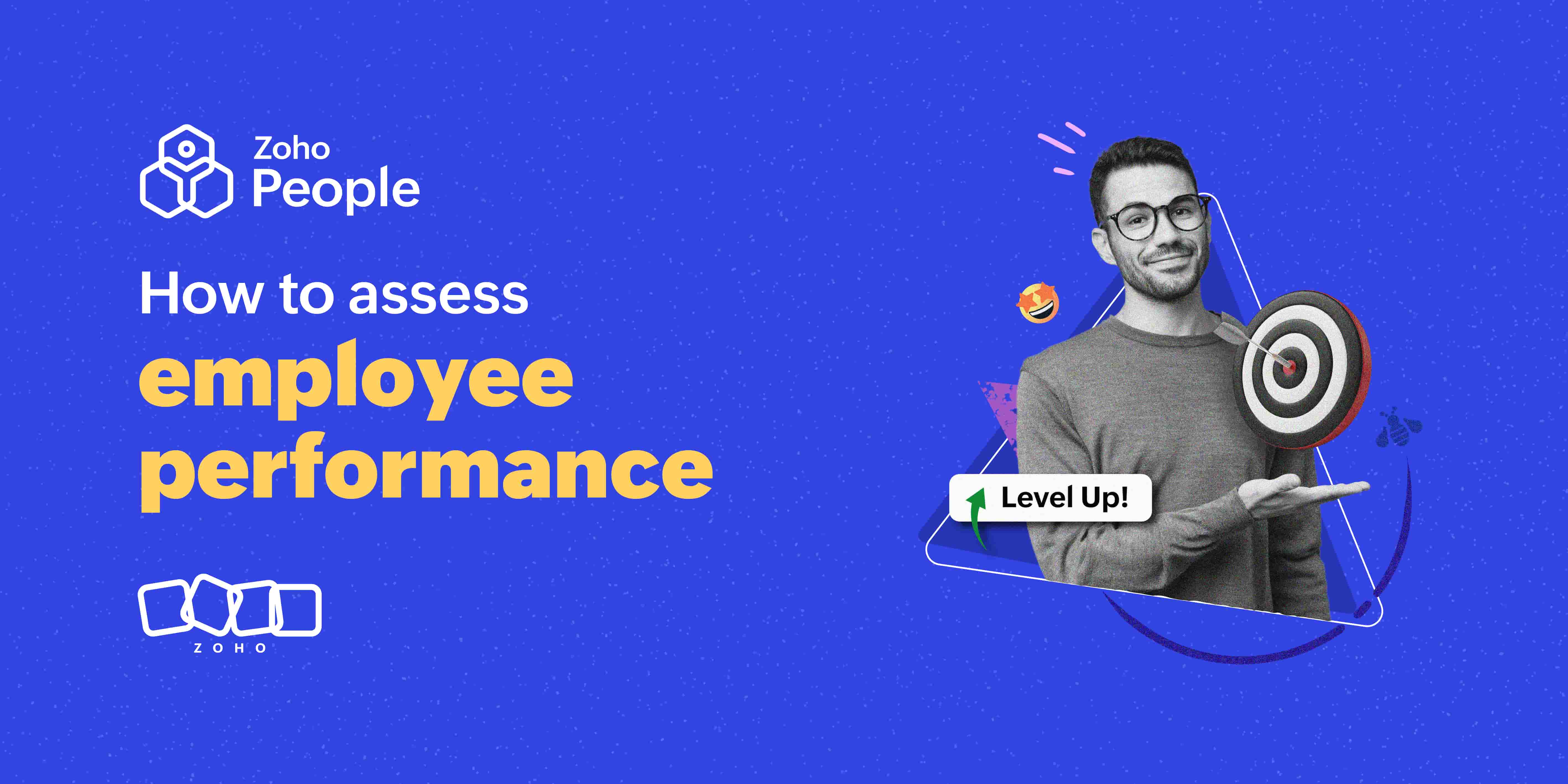- HOME
- HR insights
- Employee retention: How to create a positive workforce
Employee retention: How to create a positive workforce
- Last Updated : July 18, 2024
- 1.2K Views
- 6 Min Read

Organizations are gradually realizing the importance of retaining top talent. Nowadays, employee retention isn't just an HR term but a vital necessity that directly alters the organization's success, growth, and culture. Employee retention boosts loyalty and productivity, and it can maintain a stable yet optimistic and engaged work environment.
What is employee retention?
The term employee retention refers to the strategies and methods that organizations implement to establish a space where employees feel driven to stay with the company and contribute their best performance. Its main objective is to create a pleasant workplace culture, opportunities for growth, and appreciation for contributions. A high employee retention rate represents a healthy organization. A supportive culture with strong leaders are main factors for long-term success.
The three R's of employee retention
Let's explore some effective employee retention strategies. It's essential to understand the three core elements, often referred to as the three Rs: respect, recognition, and reward.
Respect
Respect forms the foundation of every positive work environment. It includes treating employees fairly, listening to their concerns, and valuing their opinions. A civil workforce enhances trustworthiness and loyalty, reducing the rate at which people leave their jobs. Respectful leaders make for a supportive organization in which employees are highly regarded and compensated for their hard work.
Recognition
One of the most effective methods for maintaining a positive environment is through employee recognition. By appreciating and celebrating team member contributions, organizations can unlock a number of benefits. Acknowledgement can also boost productivity and loyalty. This recognition makes it clear to employees that the organization values their efforts. It significantly affects morale, job satisfaction, and work output in ways that cannot be ignored.
Rewards
Rewards involve tangible, often transactional incentives like bonuses, raises, and gifts. Similar to recognition, rewards are crafted to motivate employees and show them that their contributions matter. Strategic rewards align with a good employee retention strategy.
Importance of employee retention
Employee retention isn't just about minimizing the turnover rate; it directly impacts the performance and the long-term sustainability of an organization. The benefits of employee retention include:
Reduced turnover cost
When an employee leaves, it can be an expensive and time-consuming process to find someone new to fill the role. Hiring includes the costs of advertising the position, conducting the interview with candidates, onboarding the new hire, and the potential lost productivity during the transition.
Preserving institutional knowledge
Experienced employees acquire valuable knowledge about the organization, its process, customers, and the skill sets required to perform a particular job. When they leave, this knowledge is difficult to replace, leading to a loss of efficiency.
Enhancing morale and engagement
When employees feel most valued and involved in the company, the chances are that they will become more motivated, which then increases their productivity, performance, and overall job satisfaction. This leads to better retention and helps companies achieve a more stable and engaged workforce.
Factors that affect employee retention
Several factors influence the rate of employee retention within an organization. Understanding them allows organizations to formulate specific strategies in terms of retention that are best suited for their workforce. Some of the core factors are:
Excessive workload
Employees who are continuously overloaded with work may face high-stress levels coupled with decreased job satisfaction and reduced productivity. In a survey by Kronos Incorporated and Future Workplace, 95% of human resource leaders admitted that burnout disrupts workforce retention, while 87% said improving retention was a critical priority for their organization. Monitoring workload levels and having the right resources and support for workers to handle the workload effectively prevents burnout and generally results in job satisfaction.
Poor workforce relationships
The relationships employees have with their colleagues and supervisors play a significant role in their decision to stay with an organization. Poor relationships can lead to a toxic work environment, decreased morale, and ultimately higher turnover rates, which might affect employee retention. Promoting a positive work culture that encourages teamwork, mutual respect, and open communication can help improve workforce relationships and retention. This includes fostering a supportive environment where employees feel comfortable sharing their thoughts and ideas and where collaboration is encouraged.
Four main pillars to improve employee retention
Improving employee retention is crucial for the success and stability of any organization. By focusing on key areas, companies can create an environment that will not just attract the best employees but also keep those employees engaged and committed.
The following four pillars are relevant to employee retention in that they increase employee satisfaction and minimize turnover. They consist of compensation and benefits, work-life balance, feedback mechanisms, and employee assistance programs (EAPs).
Compensation and benefits
Competitive salaries and benefits are the essentials of staff retention. Benefits can include performance incentives, health insurance, and retirement plans, all of which have significant effects on employee satisfaction and loyalty. Employers may also offer other fringe benefits, such as tuition reimbursement, wellness programs, and flexible spending accounts, to expand their compensation benefit structure for employees.
Encourage work-life balance
Promoting work-life balance is essential for employee well-being and retention. Flexible working hours, remote work options, and adequate vacation policies help keep an employee's personal and professional lives in harmony with one another, thereby preventing burnout and generating greater job satisfaction. Encourage employees to have normal breaks and maintain a work culture that supports work-life balance.
Feedback mechanism
A strong feedback mechanism will let employees air their views, concerns, and suggestions. Through regular feedback sessions, questionnaires, or even open-door policies, organizations can begin to understand their employees better and resolve problems at hand quickly. In the same way, organizations can create a culture of continued improvement and engagement by opening channels that provide the opportunity for employees to share opinions about their jobs regularly, like once a year, through anonymous surveys or suggestion boxes.
Conducting EAPs
Employee assistance programs, or EAPs, support employees facing personal and professional challenges. These may include counseling services, workshops for stress management, and webinars covering financial advice. All EAPs are aimed at helping staff manage situations effectively without compromising on their productivity. Offering different EAP services will ensure that employees receive adequate support for issues related to stress at and outside of work.
Types of EAPs
EAPs can be categorized into two main types:
1. Internal EAP
An internal EAP is one managed within the organization, usually by the HR department or another assigned team. This type of EAP brings more control and flexibility to best suit the needs of workers. Internal EAPs may be provided on-site, including counseling and in-house wellness programs. This helps ensure that workers have easy access to the type of support they need.
2. External EAP
An external EAP is managed by a third-party provider specializing in employee assistance services. This type of EAP offers confidentiality and a broader range of services that might not be feasible for an internal program. External EAPs provide employees with access to professional counselors, legal advice, and other resources, ensuring they receive the support they need. By partnering with an external provider, organizations can offer a wider range of services.
Difference between employee retention and employee turnover
Employee retention and employee turnover are two crucial concepts that heavily impact the success and stability of an organization. They are somewhat similar, but they represent distinct concepts in the HR division.

While employee retention focuses on strategies to retain employees, turnover analysis examines the reasons behind employee departure and identifies the areas that need improvement.
Wrapping up
Employee retention is a multifaceted process that requires continued efforts and commitments by the employers. It cannot be achieved overnight, as employee retention involves investing in people, culture, and leadership. With the strategic priority given to employee retention, resilient teams can develop, innovate, and achieve sustainable growth.


